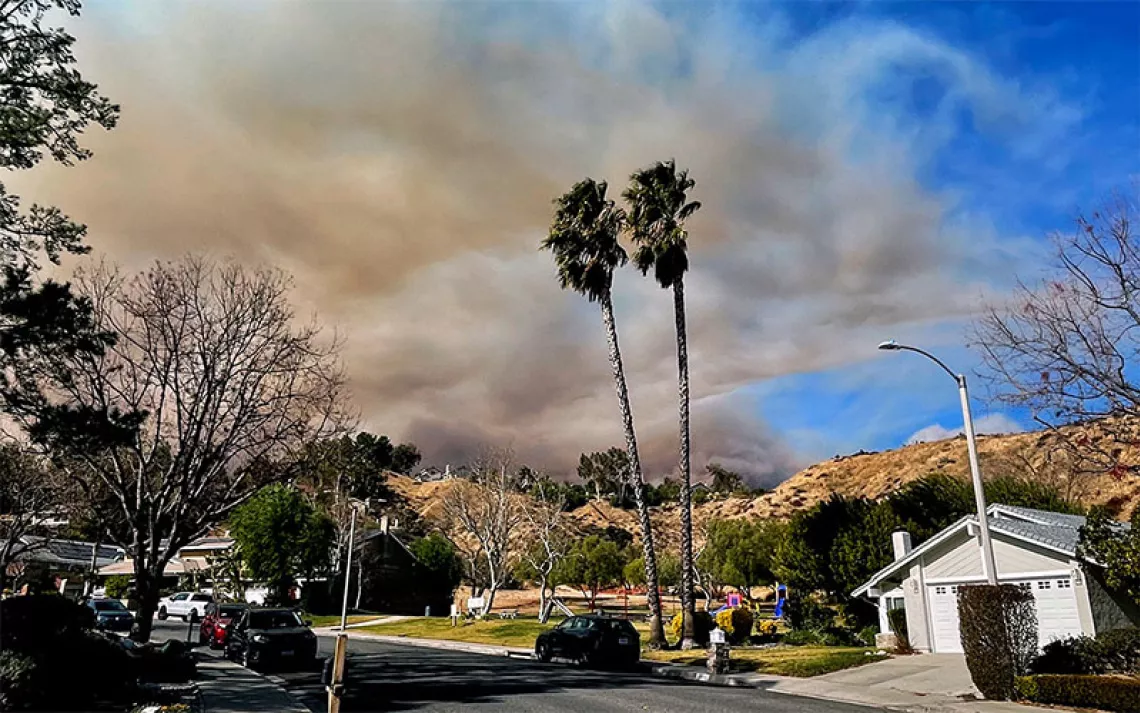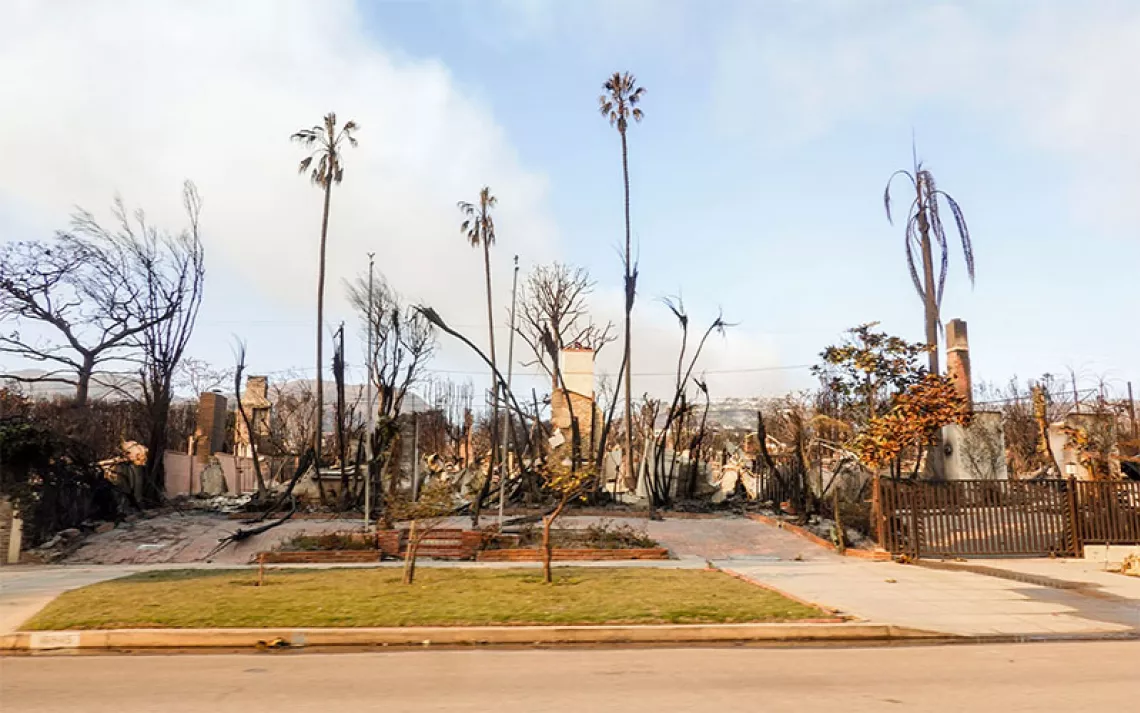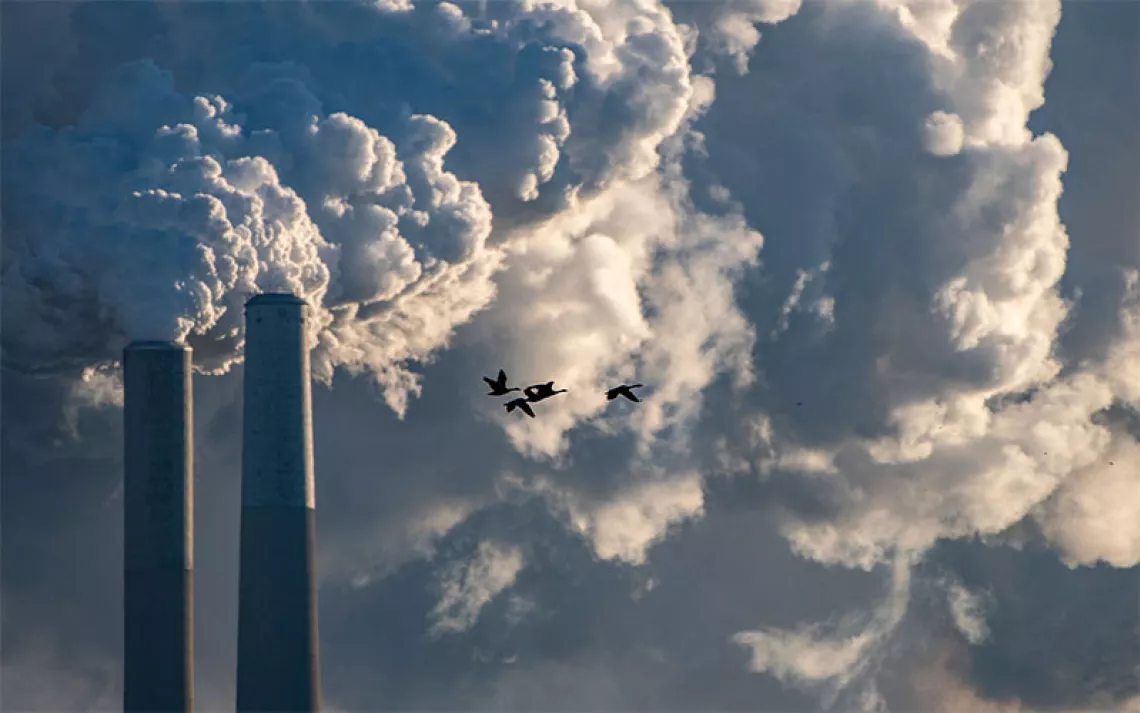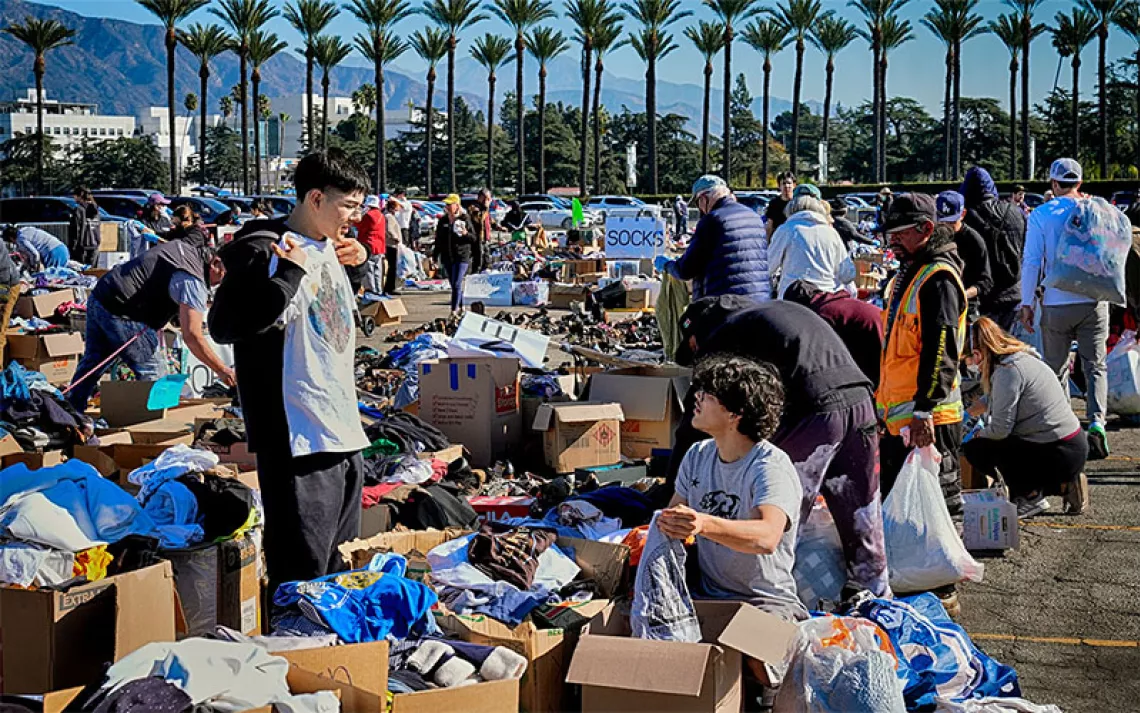Tens of Thousands of Marchers Fill New York City Streets to Demand an End to Fossil Fuel Extraction
People of all ages and from around the world call on President Biden to stop exacerbating the climate emergency
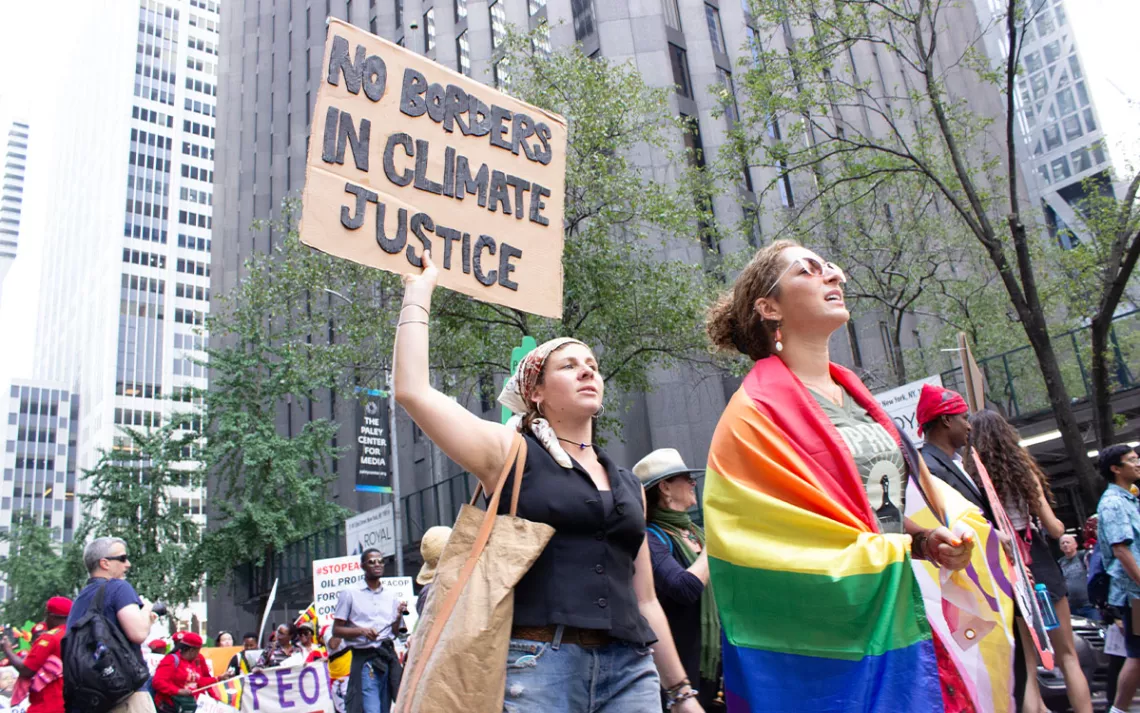
Many of the participants emphasized the need for social justice and climate justice to intersect. | Photo by Emily Driehaus
Tens of thousands of people filled the streets of Manhattan on Sunday to demonstrate their concerns about global warming and to call for an end to the fossil fuel use that is sending temperatures ever higher. The March to End Fossil Fuels was the largest climate protest in the United States since the pandemic, and it took place on the eve of this week’s United Nations General Assembly and a UN-sponsored climate summit as a way of pressuring world leaders to accelerate action on climate change.
Hundreds of groups helped plan the march, including Fridays for Future NYC, the Center for Biological Diversity, and the Indigenous Environmental Network. Organizers said that as many as 75,000 people participated in the event. The crowd was impressively diverse—including young and old, people of all ethnicities and backgrounds—and they all had the same message: It’s time to end fossil fuels.
“We’ve done everything we can, personally. We have an electric car, we have solar hot water, we have solar panels … we’re vegetarians, for crying out loud,” said Scott Schaefer-Duffy, an organizer with the Catholic Worker Movement. “We’re doing everything we can, but unless the society changes, it’s going to get worse and worse and worse.”
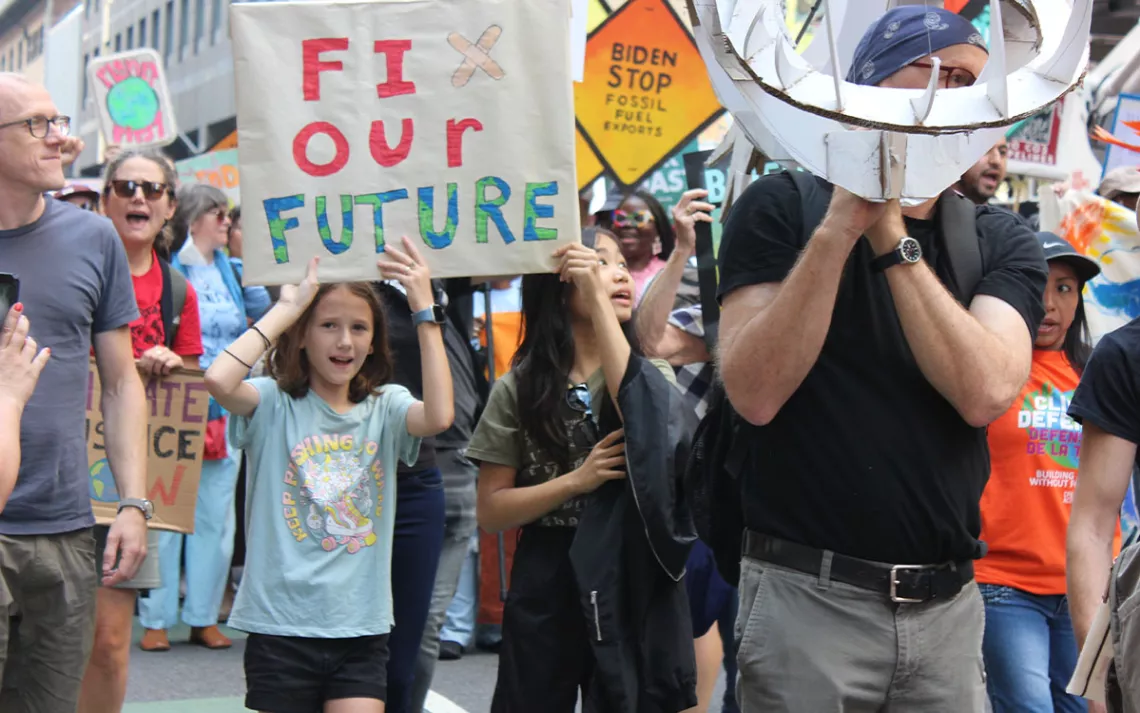
People of all ages joined the March to End Fossil Fuels on Sunday as they carried signs, played music, and chanted. | Photo by Marlowe Starling
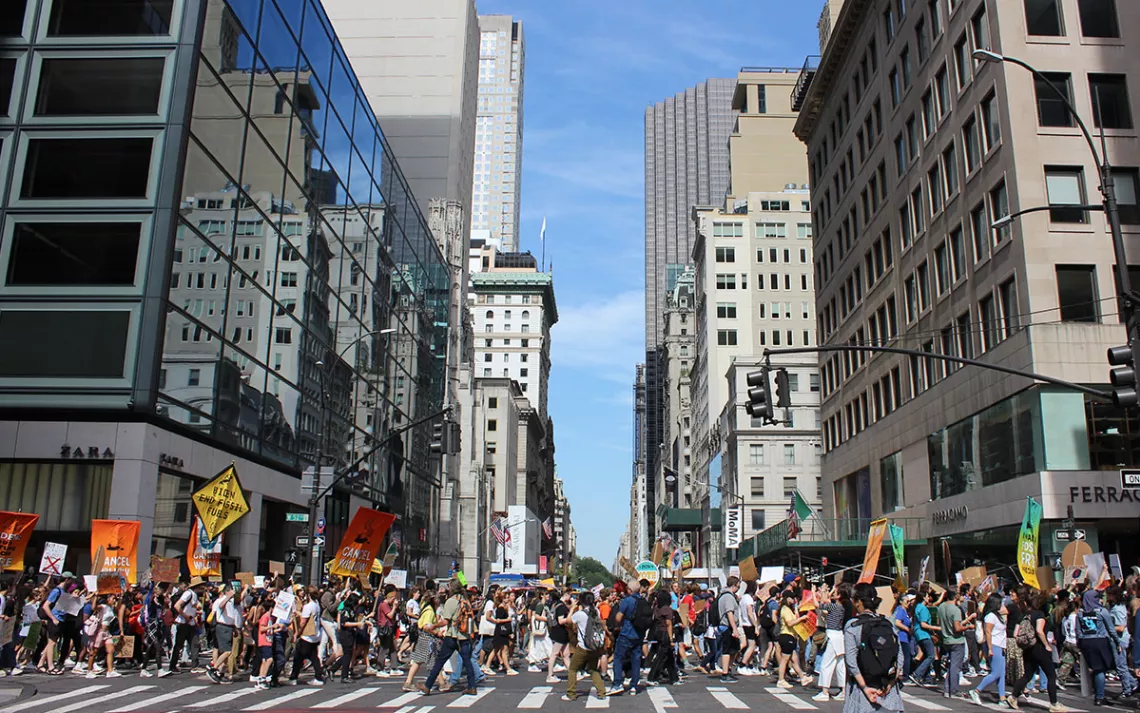
More than 75,000 people are estimated to have attended the march on Sunday, which wove through the streets of Midtown Manhattan. | Photo by Marlowe Starling
Climate activists from all over the world traveled to the city to be part of the march. Advocates from Africa, South Asia, and Latin America had specific demands for their leaders ahead of Wednesday’s UN climate summit, during which fossil fuel projects will be discussed. Olivia Bisa, a member of the Chapra nation in Peru, traveled for more than a week to be at the march and pleaded for Peruvian leaders to stop funding Petroperú, a state-owned fossil fuel company.
“When we protest, defending our territory, the oil companies criminalize us and the world doesn’t know,” she said through a translator. “When the presidents come from our country here to New York, they sign a lot of things, but they deceive us. They say they respect us, but in reality, they’re killing us little by little.”
Most marchers aimed their righteous frustration at President Biden, who in their opinion has not done enough to stop the expansion of fossil fuels. Although Biden helped usher through the largest US climate-action law in history—the Inflation Reduction Act—his administration has also approved some controversial fossil fuel projects. Marchers pointed to the Biden administration’s support for the Willow oil and gas project in Alaska and the methane-gas Mountain Valley Pipeline. Some in the crowd also criticized the administration’s support for carbon capture and storage, which many environmental groups see as a distraction that will allow fossil fuel corporations to continue drilling and polluting
Joe Biden’s here in New York right now, so [we’re] showing that we’re here, we have a voice, and we want our opinions heard,” said Emilio Carrillo, who attended the march as part of the Sunrise Movement at New York University and who was excited to be participating in his first climate protest.
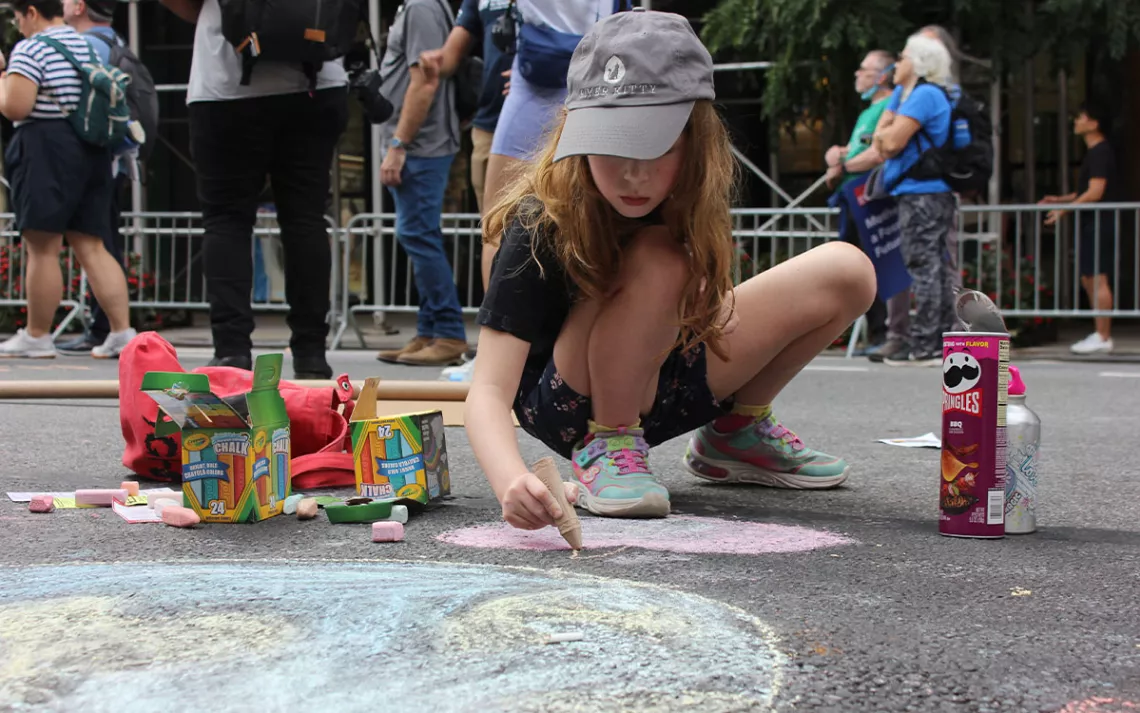
A child draws chalk art at the rally alongside her siblings. Their mother wanted to teach them that they are part of the solution. | Photo by Marlowe Starling
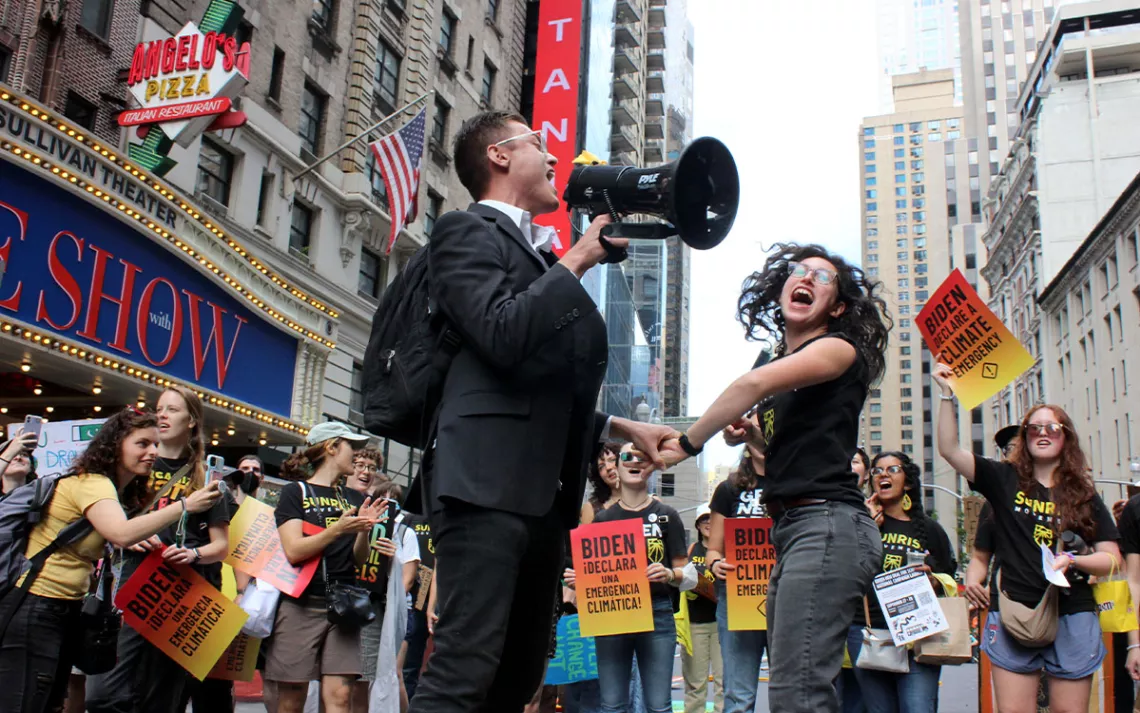
Two participants of the Sunrise Movement, a national coalition of youth climate activists, dance and chant before the march. | Photo by Marlowe Starling
People of all ages turned out on Sunday afternoon—from parents with newborns to seasoned activists who are now grandparents. Nancy Rogenborg and her husband, Larry Baker, attended the march as members of Third Act, an elders-focused climate activist group. Now that they have a grandchild, it’s even more important to them to fight fossil fuels, they said. Baker carried a sign that read “It’s About Our Grandkids!!”
Ellen Ross, an 81-year-old retired professor from Ramapo College who became politically active during Kennedy’s presidency, said she was excited to see the diversity among this year’s protesters. “It’s just a different atmosphere; it’s a different population … not the usual lefty, hippie-type people,” she said. A main point she drove home to her students was the false narrative fossil fuel companies have perpetuated for decades. “I started teaching my students about how the big fossil fuel companies have been hiding their knowledge since at least the 1970s from the world,” she said. “So we’re used to the issue, but we’re not calm. There’s no turning back.”
The marchers traveled across Manhattan from west to east, ending at a rally near the United Nations headquarters in anticipation of the summit this week. Featured speakers included Representative Alexandria Ocasio-Cortez, UNICEF goodwill ambassador Vanessa Nakate, and Roishetta Sibley Ozane, founder of the Vessel Project of Louisiana.
Marisa Wolfson brought her children to see Greta Thunberg at the Global Climate Strike in 2019. They were in strollers then. On Sunday, they were busy decorating First Avenue with chalk drawings.
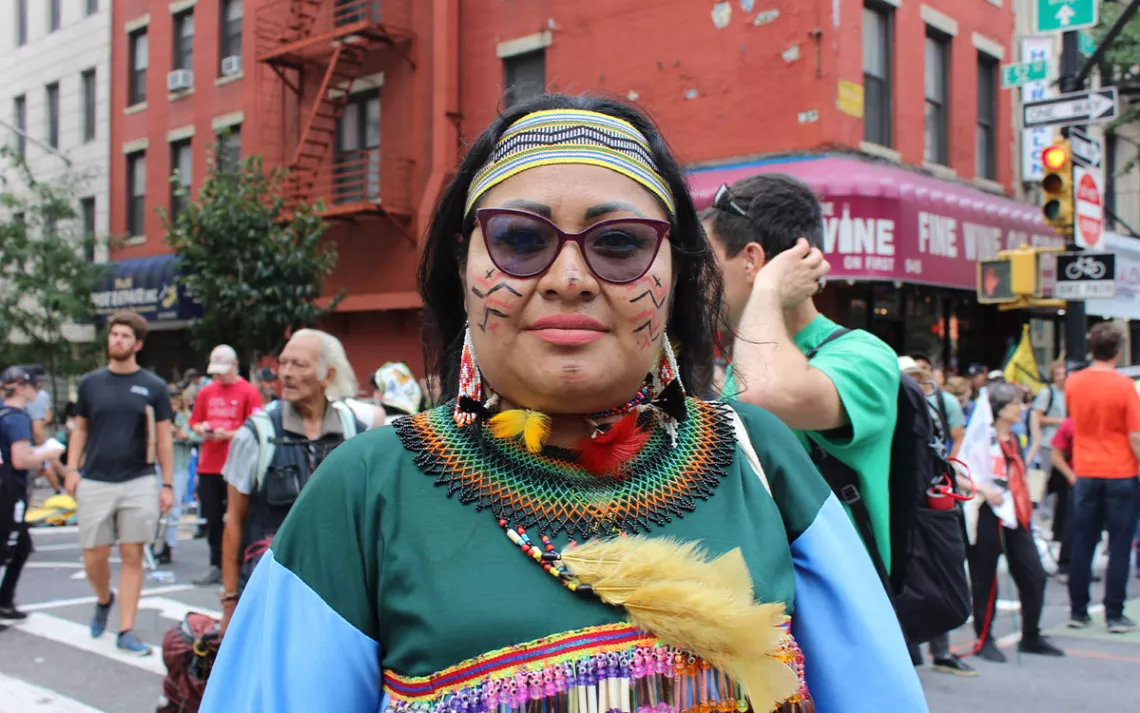
Olivia Bisa, a woman of the Chapra nation in the Amazon, traveled for over a week from western Peru to attend Sunday’s march. | Photo by Marlowe Starling
“It is absolutely the issue of our time. I want them to have a future like every other parent,” Wolfson said. “But I brought them here so that they can feel like they’re part of a solution and not just feel sadness about the wildfires and about the crazy weather and the flooding in our basement because of the torrential rain.”
Vivian Gonzalez was also creating chalk art during the rally. As a transgender mother, she said it was important for her to be at the march for her kids, and she emphasized the intersectionality of the climate movement.
“It’s really important that the various fights for humanity that are going on right now are connected, that the struggle to keep trans youth safe right now is related to the larger feminist fight against patriarchy, which is related to the climate struggle and to peace work,” she said. “All these fights will only succeed together. We have to build the future from many sides at once.”
Temma Kaplan, a retired Rutgers University history professor, expressed hoped that the march will help spark more ambitious action to halt carbon pollution before we’re past the point of no return.
“Every day we see all these people killed because of the floods and receding land, and so it’s really almost too late,” she said. “But we have to do what we can to save the earth.”
 The Magazine of The Sierra Club
The Magazine of The Sierra Club
